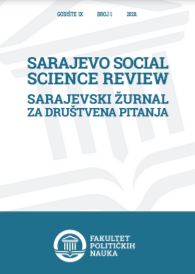Nasilje djece nad roditeljima: konceptualizacija, prevalencija, obilježja žrtve i počinitelja, eksplikacijski modeli i psihosocijalne intervencije
Child-to-Parent Violence: Conceptualization, Prevalence, Victim and Perpetrator Characteristics, Explanation Models and Psychosocial Interventions
Author(s): Sanela BašićSubject(s): Psychology, Studies in violence and power, Family and social welfare
Published by: Fakultet političkih nauka - Univerzitet u Sarajevu
Keywords: domestic violence; research on domestic violence; models of psychosocial treatment;
Summary/Abstract: Since 1962 and the scientific description of the battered child syndrome, changes in social values have led to a growing public awareness of domestic violence and contributed to the development of public policies and professional practices to protect individuals within the family. The primary focus of previous research in the field of domestic violence was on violence initiated by adults. Although available empirical data and clinical experience suggest that the phenomenon of child-to-parent violence should not be underestimated, violence of (juvenile) children against their parents is currently the most hidden and neglected form of domestic violence. Since scientific reflection on this phenomenon in the literature on domestic violence in the BiH context is lacking, the intention of this paper is to present, in a clear and systematic way, the existing scientific knowledge on the phenomenon of child-to-parent violence in relation to its conceptualization, prevalence, main characteristics of victims and perpetrators, potential explanation models and possible professional responses and interventions.
Journal: Sarajevski žurnal za društvena pitanja
- Issue Year: IX/2020
- Issue No: 1
- Page Range: 83-108
- Page Count: 26
- Language: Bosnian

